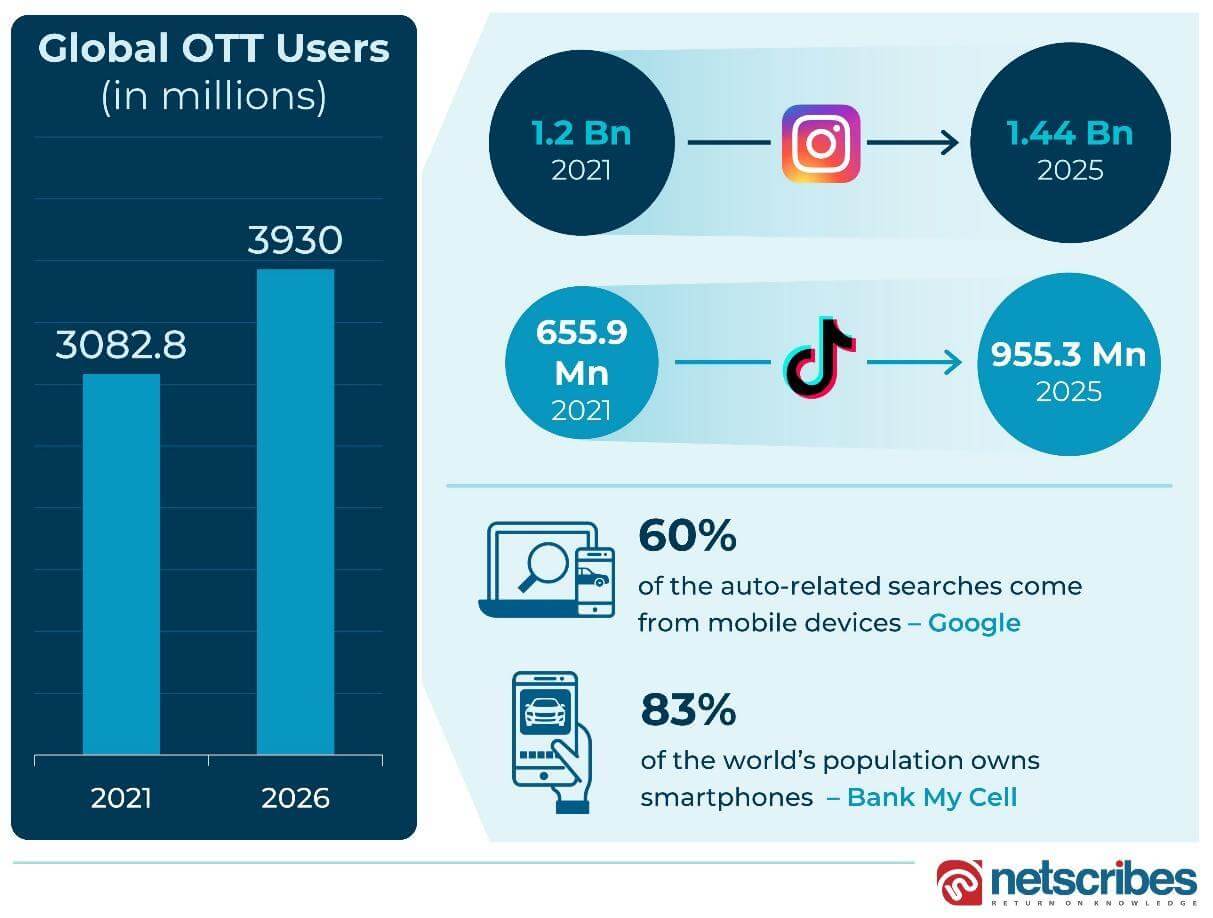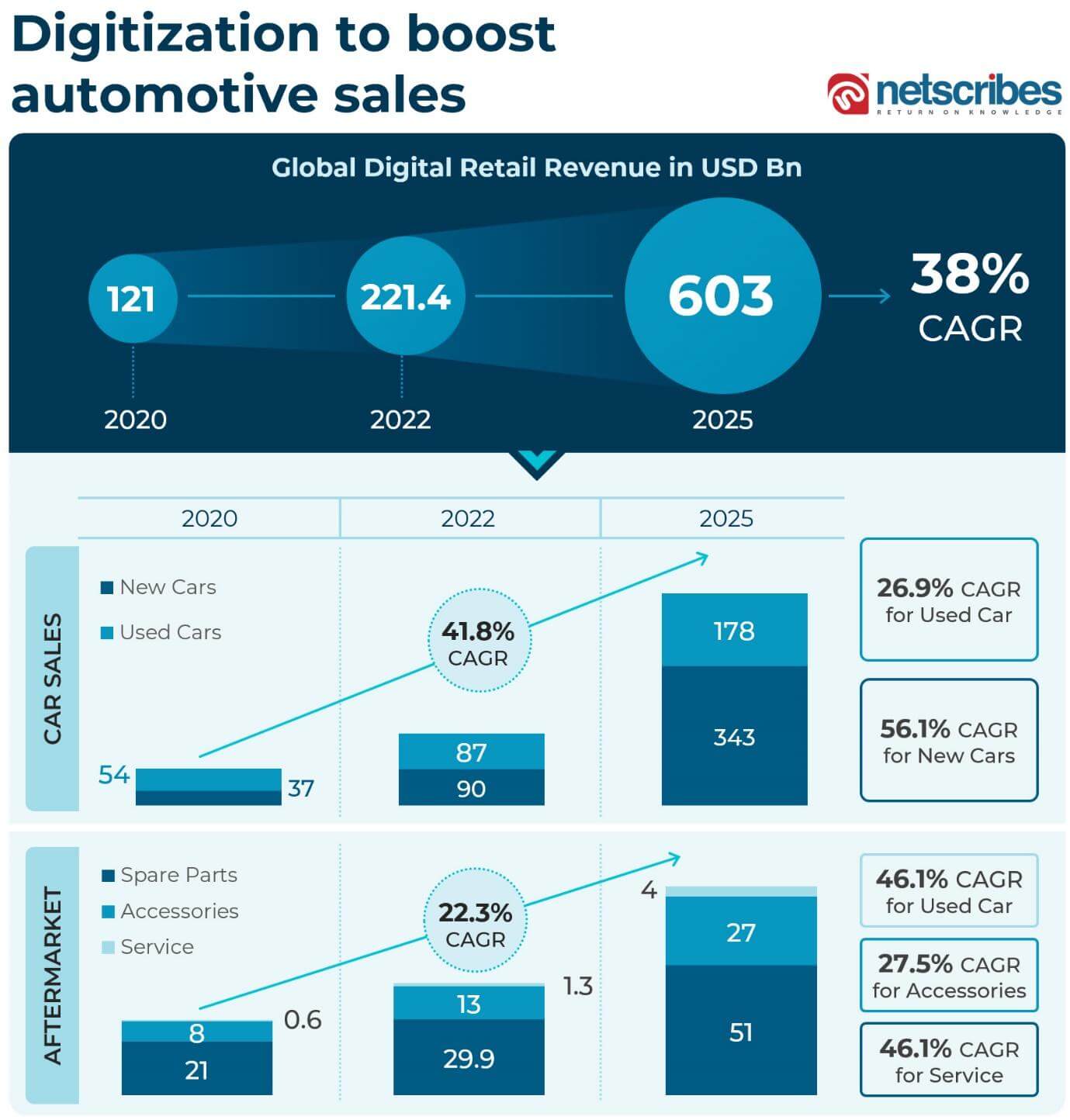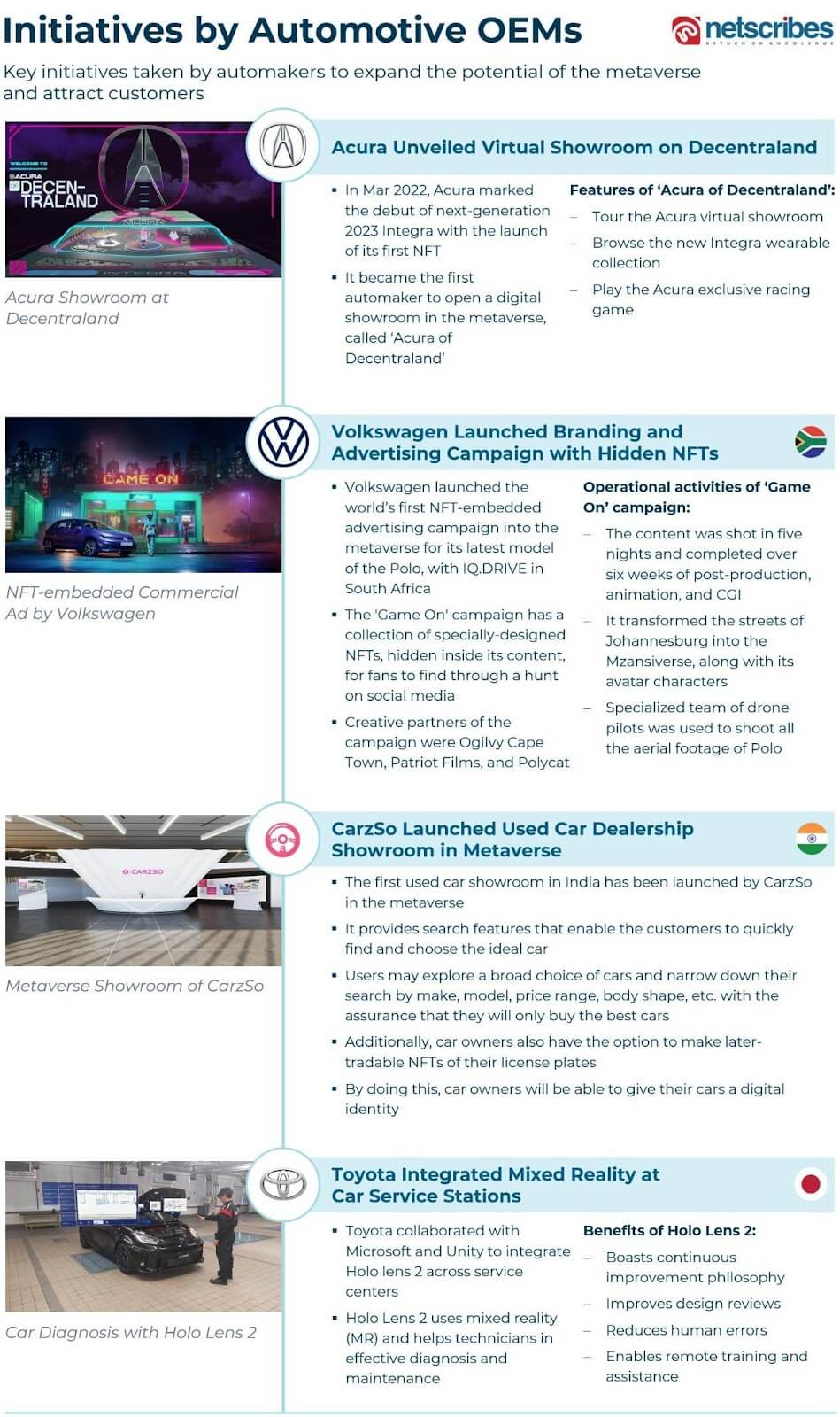The automotive industry has been witnessing numerous headwinds since the COVID-19 pandemic. The pandemic disrupted the supply chain, triggering chip shortages that resulted in a 20% reduction in production for global automakers and losses of over USD 200 billion. Moreover, the Russia-Ukraine war has worsened the situation, especially for European automakers with the scarcity of wiring harnesses, electronics, and other critical components coming from this war-torn region.
This has further reduced car production by 15%, making it a worrying situation for European automakers. These macroeconomic events have induced a severe imbalance between supply and demand. As a result, the inventory shortage has escalated the waiting period for new car deliveries up to 12 months, posing a challenge for car brands and dealers to engage with their customers. To address the challenge, automotive dealers and car makers are embracing the digital cosmos, taking to e-commerce to enhance brand engagement and omnichannel presence.
Why digital platforms are attracting automakers?
With rising economic pressures, auto-brands are re-valuating their relations with traditional advertisement (Ad) platforms like television (TV) and print. Auto brands are witnessing diminishing returns from TV Ads. Hence, the industry is shifting its advertisement spending from traditional platforms like TV commercials to OTT, virtual influencing, and social media marketing.
Also, increasing mobile users are developing an enormous user base for social media platforms like Instagram and TikTok. Mobile has changed the way in which consumers search and shop. Therefore, mobile ads can be highly beneficial, driving up to a 45% increase in conversions according to Linchpin SEO.
On the other hand, the penetration of OTT is also significantly increasing. These events are offering better engagement opportunities for automakers to step up their automotive e-commerce game.

Social media influencers are the new automotive brand ambassadors
Automotive marketing and brand building will be more disruptive than vehicle design and engineering in the coming years. Instagram and TikTok are evolving as the most disruptive platforms, which is likely dominating the brand messaging space. Influencers are not new to the industry which traditionally relied on print magazines or shows. However, such magazines no longer attract millennials and Gen Z consumers.
Eager to up their ante in the automotive e-commerce and social space auto brands are collaborating with auto influencers, as they hold influence specifically as automotive aficionados on social media platforms. These influencers can be helpful in conveying company updates like new features, colors, and models.
“Consumers trust influencers as, unlike salespeople, they are far less concerned with sales and are more interested in providing the best authentic advice to maintain and grow their online community. Content creators showcase auto products in a new light and can truly make a vehicle seem like something worth saving for.“
– Siddharth Jaiswal, Automotive Insights Leader, Netscribes
Virtual influencers: the new, upcoming disruptors
As a part of the e-commerce strategy, the automotive industry is also partnering with virtual creators to target younger generations while designing for a sustainable future.
Virtual Influencing (VI), or fictitious, completely computer-generated avatars, are attracting the attention of millions of people, especially on Instagram and TikTok, especially across Asian media. The Chinese VI market was valued at EUR 860 million in 2021 and is expected to reach EUR 2.8 billion by 2023.
It is likely that virtual creators won’t only be seen in campaigns, but will someday become part of the car design itself.
Augmented product placement – The new creative approach in the auto ads
According to data by ORC International, nearly 90% of consumers choose not to watch pre-roll ads, skipping the ad when possible or switching to a new tab. However, with Augmented Product Placement (APP) brands can be placed in front of viewers at the right moment without disturbing the viewing experience.
Post-pandemic, the APP market is likely to boost, as it is helping brands to reach their target market in the way that they prefer. It leverages AI technology to place products in any environment. Audiences can hardly notice that the product placement is virtual.
During the pandemic, when physical cars were not allowed in stadiums, Spectra placed CGI cars in three colors, during the live TV broadcasting of the 2020 World Championship.


Dealer readiness for digitalization
Dealers are merging online tools with their traditional in-person customer service to better serve customers. These tools allow customers to purchase vehicles entirely online. For dealers, good automotive e-commerce will turn every member of the sales team into a digital retail agent. They not only can provide in-person assistance to all customers but also offer a seamless experience to customers who shop on dealer websites and use their online tools to move through the purchasing process.
Moving forward, the automotive industry must adapt to the significant changes in consumer behavior and shopping habits with ‘virtual’ becoming the new normal. While established OEMs and dealers have already set-up e-commerce platforms for automotive purchase post the COVID-19 outbreak, more players are expected to enable their end-to-end e-commerce journey by rationalizing key technologies.
Over the past two decades, Netscribes’ automotive industry solutions have helped leading automakers, OEMs, and other key players understand the impact of emerging technologies and identify new growth opportunities. To learn how we can help you jump on the automotive e-commerce bandwagon and strategically monetize on upcoming retail and digital selling trends in this space, contact us.






